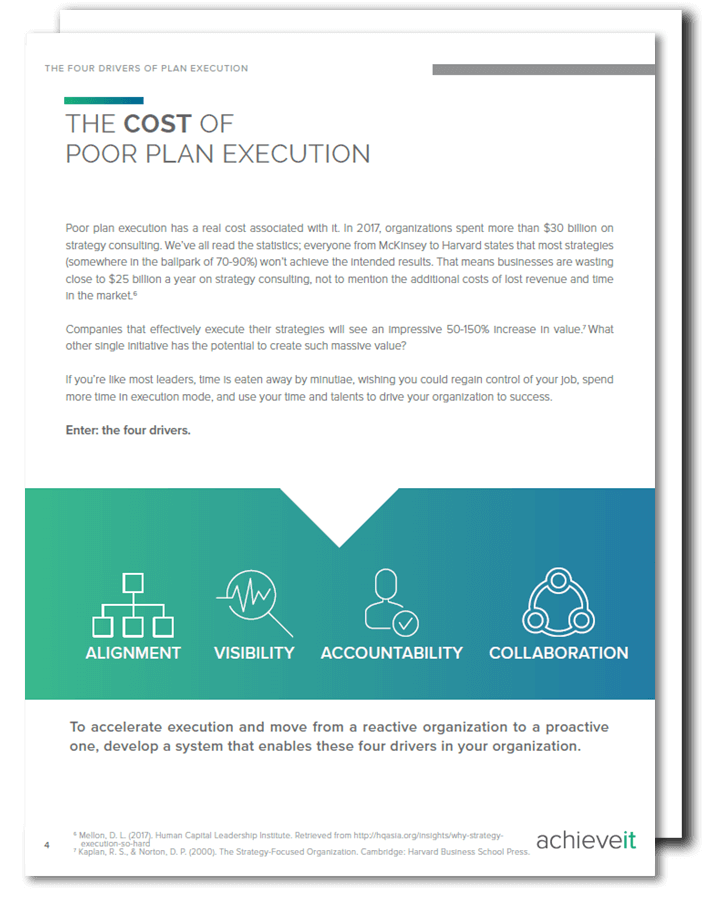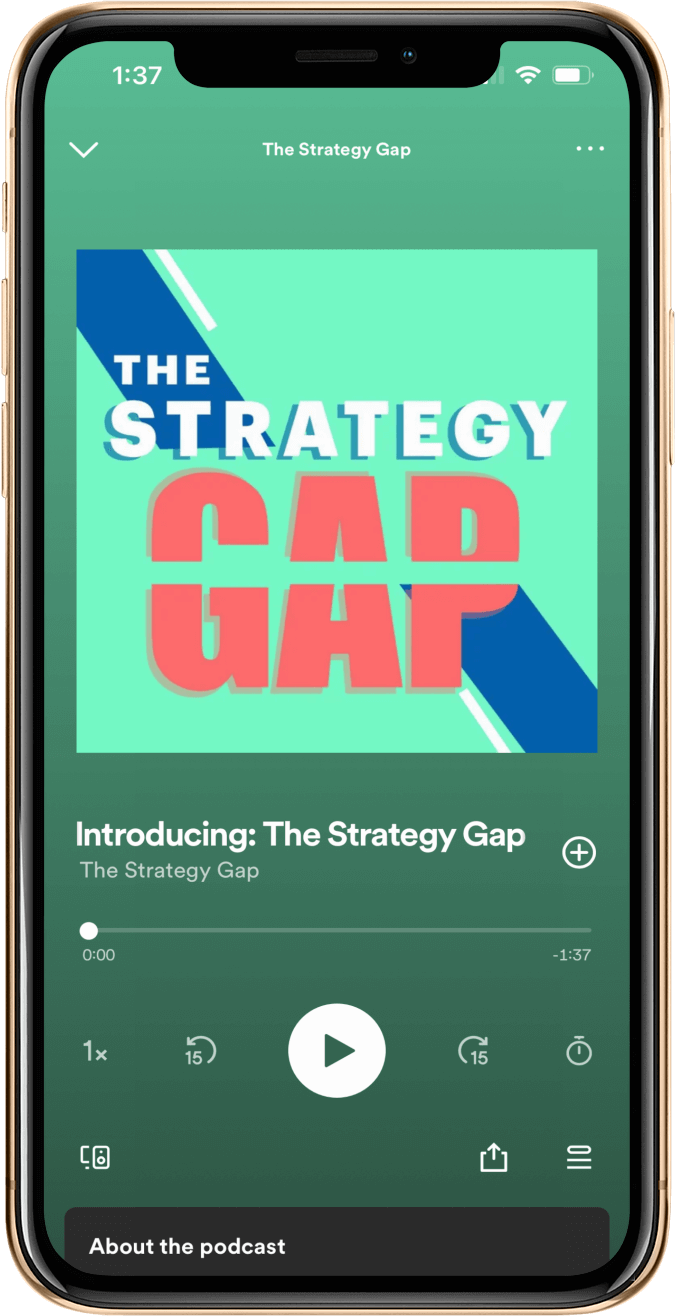In recent years, data has transformed how businesses, government entities, and third-sector organizations operate. Organizations suddenly have access to huge amounts of data and insights. Yet this abundance can be a double-edged sword. It offers great insights but can also lead to confusion and information overload.
One of the most notable changes we’ve observed is how data has enabled us to tackle decision-making in a more evidence-based manner. Data-driven decision-making allows you to develop strategies that will positively impact your business and then make the best choices for those strategies.
How data has evolved the decision-making process
Unlike the ambiguous process of the past, where decision-making felt like navigating in the dark, today’s strategic leaders rely on data for crucial insights. Data has transformed decision-making, offering early indicators of an organization’s progress.
When crafting their strategic plans, organizations establish precise objectives. But, these objectives’ success metrics are only tangible through data analysis. And without these metrics, it’s extremely challenging to definitively gauge any progress toward goals.
If the data clearly shows that the implemented strategies and activities effectively improve customer satisfaction, organizations are encouraged to continue with their current course.
However, if it reveals areas in need of improvement, organizations can conduct a comprehensive assessment. They can use relevant metrics and data-driven insights to reallocate resources to the areas that need it the most. This ensures they’re constantly aligned with their objectives, even if those objectives need to change in response to new challenges and opportunities.
Use the right balance of metrics to lead your decisions
Striking the right balance of key metrics and KPIs is crucial for making effective decisions. When you have too many metrics to consider, it can cause confusion and make it difficult to see the real progress of your strategy. Data should be your guiding light in decision-making, offering a clear beacon towards success. It’s especially important to establish a well-defined set of both leading and lagging metrics, giving you a complete overview of your strategy’s performance.
Think of your strategic plan’s overarching goals as the ultimate destination. These are your lagging metrics, representing the outcomes that you aim to achieve over time. Leading metrics support these overarching goals. They’re the measurable elements in your control that offer immediate insights and allow you to make proactive adjustments. Achieving your leading metrics should often lead to positive changes in your lagging indicators.
Imagine you’ve set a lagging metric to enhance customer satisfaction. You can select leading metrics that you can actively measure, like customer feedback, response times, or product quality, which can directly contribute to increased satisfaction. Taking a balanced approach ensures a holistic view of your strategy’s health and empowers you to adapt as needed.
Evaluate your progress throughout the planning lifecycle
Decision-making doesn’t end once you’ve created your plan. You’ll need to continuously assess your strategy’s performance during its execution. A common pitfall we see is when organizations develop a strategic plan but then shelve it, resulting in lost opportunities for adjustments.
So rather than just setting a course and hoping for the best, consistent evaluation is essential. Some organizations confine their strategic planning to a yearly ritual, which is often insufficient to keep up with rapidly changing business landscapes. But with advancements in data information, we’ve seen more organizations understand the need for a regular cadence of reviews.
How often you choose to evaluate your strategy depends on the needs of your business. Monthly assessments offer quicker insights into progress and aid in agile decision-making. However, the key is to find a sustainable pace that suits your organization. Frequent assessments will help provide you with a deeper understanding of trends and fluctuations, helping you make more informed and timely decisions.
By making progress evaluations a routine part of your strategic process, you’ll stay agile and able to promptly react to changes. This will foster a dynamic approach to your strategy execution, ensuring you’re always making well-informed decisions based on the latest data.
FREE RESOURCE
Four Drivers of Strategy Execution
Download this guide to understand the cost of allowing poor execution, identify common barriers and learn how to implement a system that encourages a culture of execution.

Balance qualitative and quantitative data with the human element
In today’s data-driven world, organizations often find themselves choosing between relying purely on quantitative data and incorporating qualitative insights.
Traditionally, decision-making was heavily reliant on gut feelings and emotions. Then came the era of data inundation, where organizations armed themselves with powerful business intelligence tools and reams of data. The pendulum had swung to an extreme, and many missed the emotional and contextual aspects that data alone just couldn’t provide.
Decision-makers have to consider both qualitative and quantitative aspects. It’s not solely about what the numbers say (although that’s important) but also about listening to the voices closest to the work — the people who understand the nuances behind the data.
For instance, a surge in marketing qualified leads (MQLs) may seem like a resounding success, but it could be tied to an event that can’t be replicated. In larger organizations, examining data without tapping into the insights of those on the ground can lead to an important loss of context.
The overabundance of data and advanced systems is outpacing the human capital side of data management. Many organizations have cutting-edge tools at their disposal but lack the experts to read, comprehend, and provide meaningful analyses. This deficiency increases the likelihood of flawed decisions because the data simply isn’t being evaluated correctly.
By integrating both types of data, organizations gain a comprehensive understanding of their metrics alongside the contextual insights provided by frontline employees. This approach helps to rectify any deficiencies caused by the overabundance of data and the shortage of human expertise. Furthermore, it ensures that data evaluation encompasses both statistical analysis and real-world interpretation, culminating in informed and more accurate decision-making processes.
Use technology to help you make data-backed decisions
Various software solutions on the market offer different functionalities and capabilities when it comes to strategic planning and execution. When seeking a tool for your organization, there are two features that are essential to look for:
- Software that unites qualitative and quantitative insights. This means finding a solution that not only provides comprehensive numerical insights but also offers context, enabling a deeper understanding of the data.
- Software that drives individual accountability throughout the organization. Many tools informally assign responsibilities without directly linking them to specific people or effectively spreading responsibilities across all levels of the organization. An effective solution should provide a clear understanding of accountability at all levels of the plan. This means both in terms of initiatives and projects and in managing data and metrics.
At AchieveIt, we understand the significance of these factors. We provide a platform that seamlessly combines both quantitative and qualitative data, offering you not only the “what” in terms of metrics but also the “why” through contextual information.
AchieveIt aligns initiatives, projects, and metrics with individual responsibilities at every level. Our platform enables you to evaluate your performance thoroughly and helps you make data-backed decisions with clarity.
Cultivate an execution culture using strategies for success
Dive deeper into the world of strategic execution with AchieveIt’s Strategy Gap Podcast. Our first episode, “Building an Execution Culture: Embracing Strategy in Action,” features Candice Williams, Strategy Manager at the Development Bank of Jamaica.
She shares her firsthand insights into crafting and successfully implementing organizational strategies. Discover the significance of strategy, learn how to avoid common pitfalls, and explore the vital role of cascading sessions in integrating strategy into your company culture. Find out how to monitor outcomes and drive accountability.
Listen to The Strategy Gap
A podcast about the space between savvy strategy and practical execution, including everything that can go wrong on the way.




